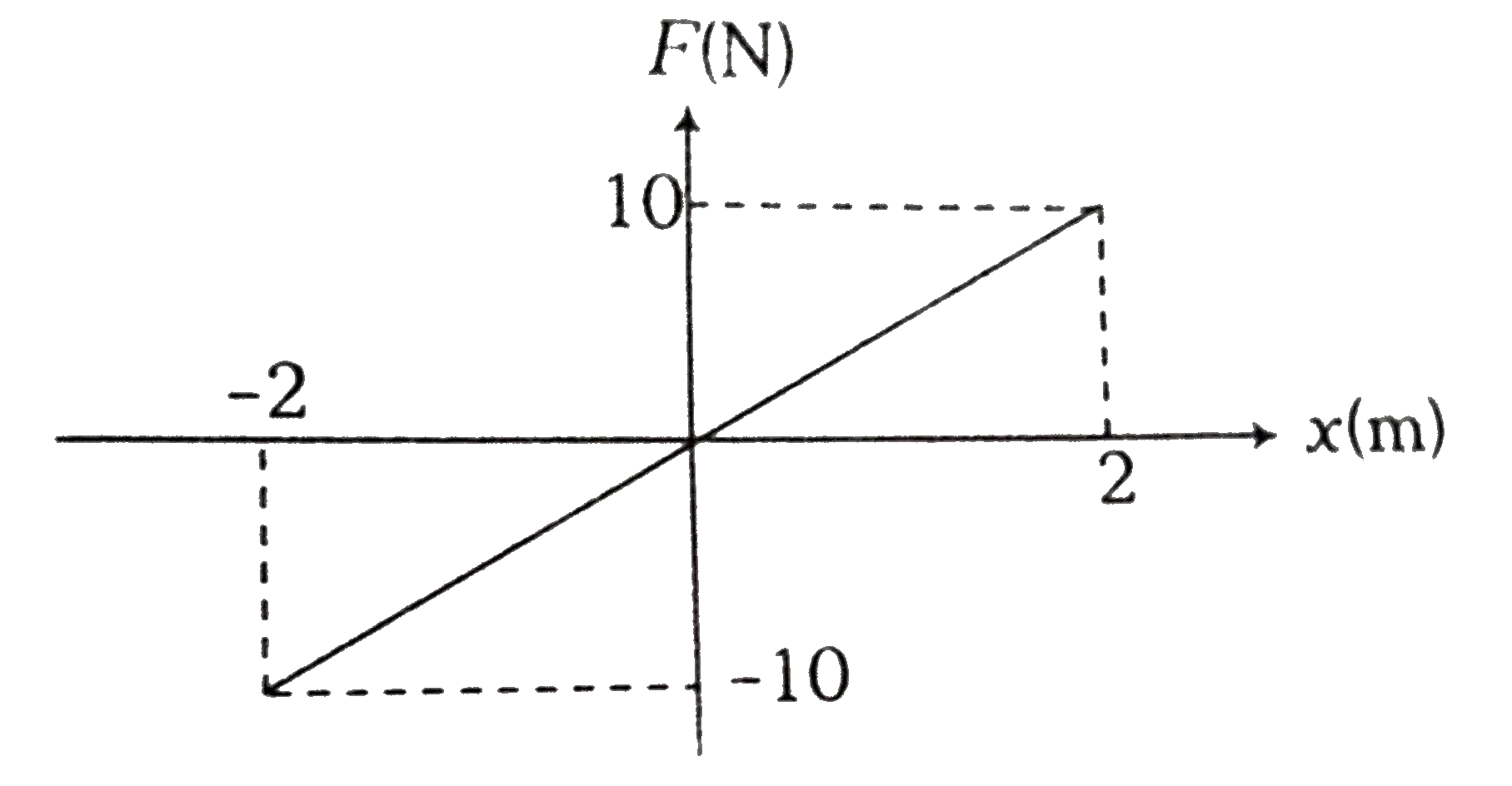A time dependent force F=6t acts on a particle of mass 1kg. If the particle starts from rest, the work done by the force during the first 1sec. will be
9J
18J
4.5J
22J
To solve the problem step by step, we will follow these steps:
Step 1: Understand the given force
The force acting on the particle is given by the equation:
F=6t
where t is the time in seconds.
Step 2: Identify the mass of the particle
The mass of the particle is given as:
m=1kg
Step 3: Determine the acceleration
Using Newton's second law, we know that:
F=m⋅a
Thus, we can express acceleration a as:
a=Fm=6t1=6t
Step 4: Relate acceleration to velocity
Acceleration is the rate of change of velocity, so we can write:
a=dvdt=6t
Step 5: Integrate to find velocity
To find the velocity, we integrate acceleration with respect to time:
∫dv=∫6tdt
This gives us:
v=3t2+C
Since the particle starts from rest, the initial velocity v(0)=0, which means C=0. Therefore:
v=3t2
Step 6: Calculate the velocity at t=1s
Substituting t=1 into the velocity equation:
v(1)=3(1)2=3m/s
Step 7: Calculate the change in kinetic energy
The change in kinetic energy (work done) can be calculated using the formula:
W=KEfinal−KEinitial
The initial kinetic energy KEinitial is:
KEinitial=0J (since it starts from rest)
The final kinetic energy KEfinal is given by:
KEfinal=12mv2=12(1)(3)2=92J
Step 8: Calculate the work done
Thus, the work done by the force during the first second is:
W=KEfinal−KEinitial=92−0=92J
This simplifies to:
W=4.5J
Final Answer
The work done by the force during the first second is:
4.5J
The force acting on the particle is given by the equation:
F=6t
where t is the time in seconds.
The mass of the particle is given as:
m=1kg
Using Newton's second law, we know that:
F=m⋅a
Thus, we can express acceleration a as:
a=Fm=6t1=6t
Acceleration is the rate of change of velocity, so we can write:
a=dvdt=6t
To find the velocity, we integrate acceleration with respect to time:
∫dv=∫6tdt
This gives us:
v=3t2+C
Since the particle starts from rest, the initial velocity v(0)=0, which means C=0. Therefore:
v=3t2
Substituting t=1 into the velocity equation:
v(1)=3(1)2=3m/s
The change in kinetic energy (work done) can be calculated using the formula:
W=KEfinal−KEinitial
The initial kinetic energy KEinitial is:
KEinitial=0J (since it starts from rest)
KEfinal=12mv2=12(1)(3)2=92J
Thus, the work done by the force during the first second is:
W=KEfinal−KEinitial=92−0=92J
This simplifies to:
W=4.5J
The work done by the force during the first second is:
4.5J
Topper's Solved these Questions
- WORK, ENERGY AND POWERBOOK - PRADEEPCHAPTER - WORK, ENERGY AND POWEREXERCISE - Comprehension
9 Videos
- WORK, ENERGY AND POWERBOOK - PRADEEPCHAPTER - WORK, ENERGY AND POWEREXERCISE - Integer Type Questions
9 Videos
- WORK, ENERGY AND POWERBOOK - PRADEEPCHAPTER - WORK, ENERGY AND POWEREXERCISE - NCERT( Multiple choide questions-1)
21 Videos
- THERMODYNAMICSBOOK - PRADEEPCHAPTER - THERMODYNAMICSEXERCISE - Assertion- Reason Type Questions
19 Videos
Similar Questions
A time dependent force F=3t^(2)+6t acts on a particle of mass 18kg .If particle starts from rest the work done by the force during the first 3 second will be :
View SolutionA time dependent force F=3t^(2)+6t acts on a particle of mass 18kg .If particle starts from rest the work done by the force during the first 3 second will be : (A) 40.5J (B) 324J (C) 81J (D) 262J
View Solution
Knowledge Check
A force of 5 N acts on a 15 kg body initially at rest. The work done by the force during the first second of motion of the body is
A5 JB56JC6JD75 JA force of 5 N acts on a 15 kg body initially at rest. The work done by the force during the first second of motion of the body is
A5JB56JC6JD75JA force given by the relation F=8t, acts on a body of mass 2kg, initialiy at rest. Find the work done by this force on the body during first 2 seconds of its motion.
A64JBzeroC−64JDnone of these
In the given figure, find the force acting on a particle of mass 1 kg.
View SolutionA force F acting on a particle varies with the position x as shown in figure. Find the work done by this force in displacing the particle from

View SolutionA force F=a+bx acts on a particle in x-direction, where a and b are constants. Find the work done by this force during the displacement from x1 to x2.
View SolutionA force F = 0.5x + 10 acts on a particle. Here F is in newton and x is in metre. Calculate the work done by the force during the displacement of the particle from x = 0 to x = 2 metre.
View SolutionA force F=(a+bx) acts on a particle in x direction where a and b are constants . Find the work done by this force during displacement from x1 to x2 .
View Solution
